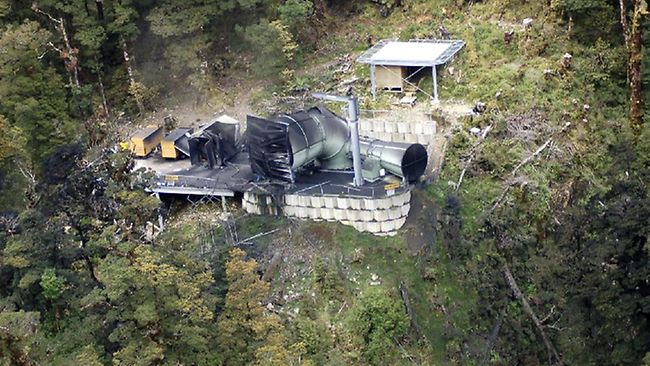Drilling continues at the Pike River mine as engineers create a 162-metre deep bore hole through to the mine shaft which they will use to take more air quality measurements and to lower a camera to try and see inside the mine.

The Science Media Centre received the following questions from journalists over the weekend and put them to mine engineering and mine safety experts. Their answers are below.
If you have science-related questions relating to the Pike River mine explosion and the rescue effort underway there and need assistance in finding answers from experts, contact the SMC.
Experts quoted
Associate Professor David Cliff: Associate Professor at the Minerals Industry Safety and Health Centre at The University of Queensland.
Dr Gavin Mudd: Lecturer in Environmental Engineering, Monash University (former Visiting Research Fellow at the University of Auckland).
Both experts are available for comment today.
Timeframe
Is there a threshold in mining disasters like this after which the probability of miners surviving an underground explosion really starts to decrease?
David Cliff: “In general the clock ticks from the time of the explosion.”
Gavin Mudd: “Hard to say, if the safety systems are there, the recent Chilean accident shows they can last for many days – depends on numerous factors.”
The main factor determining when a rescue crew can enter the mine is the air quality in the mine shaft. Is the make-up of the atmosphere likely to change unpredictably following an underground explosion of this type?
David Cliff: “Very much so, the explosion will have damaged the ventilation system which inhibits the ability to purge mine gases and allows the build up of seam methane.”
Gavid Mudd: “Air quality could change, depends if any combustion is still occurring.”
Can fresh air be pumped into the mine to sufficiently stabilise the atmosphere to make it safe for rescue workers to enter the mine? If so, how long would it take?
David Cliff: “Ventilation would need to be re-established to sweep the gases away. The risk is that the current ventilation circuit is intake drift direct to the mine fan without ventilating the rest of the mine.”
Gavin Mudd: “Depends on status of ventilation systems and air quality – complex question and hard to say without more data (hence the drilling onsite now).”
Cause of the explosion
A build-up of methane has been pointed to as the source of the explosion. This particular mine shaft crosses the Hawera Fault. Do faultlines pose particular problems in mining when determining sources of methane and removing it ie: can methane from removed locations travel along fault lines into coal seams?
David Cliff: “Not necessarily. The faultiness poses mining problems which make everything more difficult.”
Gavin Mudd: “Can be difficult to predict the behaviour of faults – sometimes they are impermeable other times they can allow migration of gases or water, in other cases structural movement induced by mining or normal seismic activity may alter the situation too.”
Any further technical info about the combination of methane and air required to create an explosion of this type?
David Cliff: “The standard science applies – 5 % to 15 % unless there are significant quantities of other gases such as Hydrogen, ethane, ethylene and carbon monoxide.”
Gavin Mudd: “Methane only requires a low concentration of a few percent in air to be flammable, but there does need to be an ignition source”.
What are common causes of ignition of methane gases in mines?
David Cliff: “Electricity – if the equipment is not flameproof or intrinsically safe, friction ignition – rock on rock or cutter pick on rock and spontaneous combustion of the coal.”
Gavin Mudd: “Common causes can be equipment, especially electrical equipment, or it can be metal sparks, static electricity or other source – of course, at present we have no idea on this case.”
What is the temperature and atmosphere in the mine likely to be like in the wake of the explosion?
David Cliff: “Initially some parts of the mine could be very hot – the peak temperature of the explosion would be of the order of 1500 K (1227C). The residual temperature will depend upon the size of the explosion compared to the bulk volume of the mine.”
Rescue effort
Is the fact this is a horizontal shaft going to make rescue efforts easier relative rescue efforts in vertical shaft mines?
David Cliff: “Access is easier but the travel time is longer – which is a constraint when being on foot and wearing breathing apparatus. It may actually be difficult to get beyond the entry drift – without fresh air base underground.”
A robot will be deployed into the mine – have these been used in other moning disasters to good effect? What sort of tasks/measurements can a robot perform?
David Cliff: “Robots in general in the past have seldom worked – they are not able to cope with the level of damage found in the mines and are not flame proof or intrinsically safe. A robot was used in the USA at Sago with limited success.
“They cannot be used in flammable atmospheres. They usually trail a cable for control and communications and these are prone to damage. SIMTARS have such a robot with cameras, gas monitoring and temperature sensing. NUMBAT is the most famous AUS robot which never achieved its potential – it cost millions of dollars but needed much more to make it really useful.”
Commentary on methane, firedamp and the Pike River explosion from Pulitzer Prize-winning US science writer Deborah Blum on the website of the Public Library of Science (PLoS).
Further comments will be added to the Science Media Centre website.